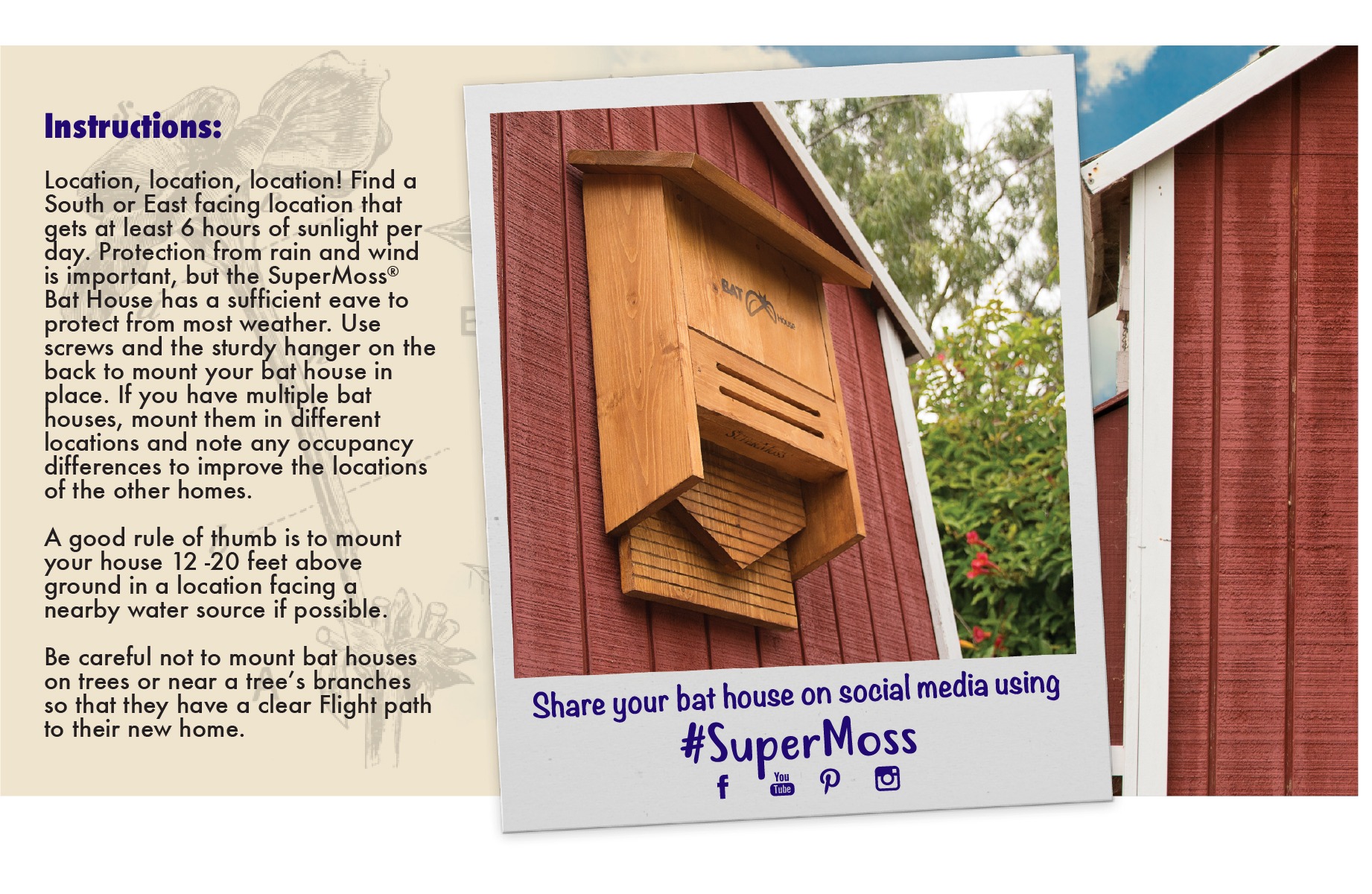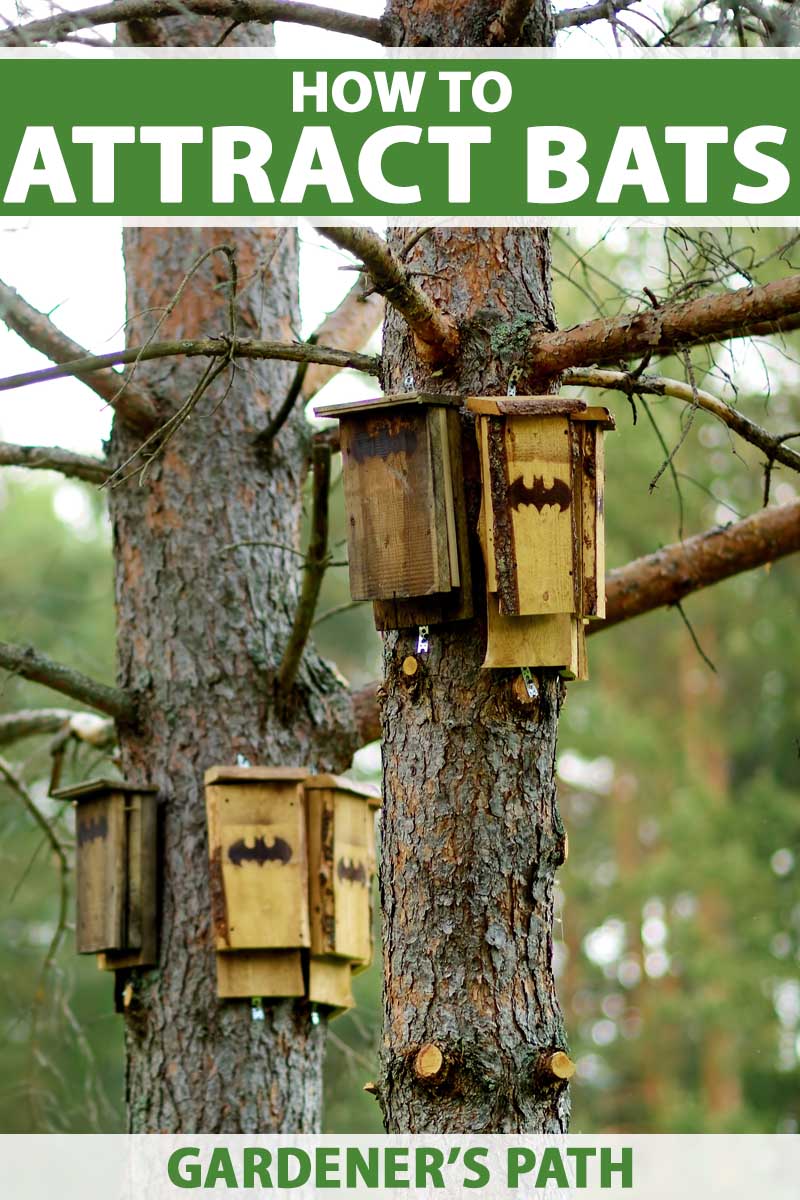Imagine stepping into your garden at dusk, where the gentle flutter of wings signals the presence of nature’s most efficient insect control—bats. These fascinating creatures are not only vital for maintaining ecological balance, but they also offer you a natural way to keep pesky bugs at bay.
Curious about how to attract bats to your bat house? You’re in the right place. This guide will reveal simple, yet powerful strategies to transform your outdoor space into a welcoming haven for bats. By the time you finish reading, you’ll be equipped with the knowledge to invite these nocturnal allies into your yard, enriching your environment while supporting local biodiversity.
Let’s get started on making your garden a bat paradise!
Choosing The Right Location
Attracting bats to your bat house requires the right location. Bats seek comfortable and secure environments for roosting. Choosing an ideal spot is crucial. This increases the likelihood of bats taking up residence. Below are some key factors to consider.
Optimal Sunlight Exposure
Bats prefer warm spaces. Place your bat house in a sunny location. Aim for at least six hours of sunlight daily. This warmth attracts bats and aids in temperature regulation. South or southeast-facing walls are often best.
Proximity To Water Sources
Bats need water nearby. Position your bat house within a quarter-mile of a water source. Ponds, streams, or birdbaths work well. Water sources attract insects, which are a food supply for bats.
Avoiding Predator Zones
Predators deter bats. Avoid placing bat houses near predator habitats. Trees, tall structures, or areas with many cats pose risks. Ensure the location is at least 12 feet above ground. This reduces the threat from ground predators.

Designing The Perfect Bat House
Creating a bat house can enhance your garden’s ecosystem. An effective design attracts bats, providing them shelter. Consider several factors for the perfect bat house. Each detail plays a crucial role in drawing bats.
Size And Dimensions
The size of your bat house matters. It should be at least 20 inches tall. A width of 12 inches is ideal. This gives bats enough room to roost. Ensure the house is deep, around 3 inches. More depth allows better insulation. It also supports more bats.
Material Considerations
Use durable materials to build your bat house. Exterior-grade plywood is a great choice. It withstands weather changes. Avoid using treated wood. It can harm bats. Paint the exterior with non-toxic paint. Dark colors absorb sunlight and provide warmth.
Interior Features
Interior features help bats feel comfortable. Add grooves or netting inside. These provide grip for bats. The interior should stay dry. Good ventilation helps with this. Ensure there are small vents. These allow air circulation without losing heat.
Installation Techniques
Installing a bat house correctly is crucial for attracting bats. They seek safe, warm, and appealing habitats. Proper installation techniques can make your bat house more inviting. Pay attention to height, stability, and orientation. These factors influence the likelihood of bats choosing your house.
Correct Mounting Height
Mount your bat house at least 12 to 20 feet high. This height offers safety from predators. It also provides a suitable environment for bats. High placement increases the chances of bats inhabiting the house.
Stable Support Structures
Ensure your bat house has a stable support structure. Use sturdy poles or buildings as mounting surfaces. Stability prevents damage from wind or storms. A secure house attracts more bats.
Orientation For Maximum Attraction
Face your bat house south or southeast. This orientation allows it to receive ample sunlight. Aim for six to eight hours of sunlight daily. Sunlight keeps the house warm, making it more attractive to bats.

Creating A Bat-friendly Environment
Creating a bat-friendly environment is essential for attracting bats to your bat house. These nocturnal creatures seek specific conditions to thrive. Understanding their needs can enhance your chances of welcoming bats into your backyard.
Planting Bat-friendly Flora
Plant flowers that bloom at night. They attract insects bats love to eat. Choose native plants. They are better suited to local wildlife. Fragrant plants also help. They draw insects, increasing bat visits.
Ensuring Safe Surroundings
Maintain a clean area around your bat house. Remove debris where predators can hide. Secure loose wires. They can trap bats. Keep water sources nearby. Bats need them for drinking and bathing.
Minimizing Light Pollution
Bats prefer darkness. Bright lights can deter them. Use soft lighting near the bat house. Install motion-activated lights. They limit light exposure. Keep unnecessary lights off. This creates a more inviting space for bats.
Monitoring And Maintenance
Monitoring and maintaining your bat house is crucial for ensuring it becomes a welcoming home for bats. A bat house is not just a set-and-forget project; it requires regular attention and care to be effective. By keeping an eye on your bat house, you can make sure it serves its purpose and provides a safe haven for these fascinating creatures.
Regular Inspection
Checking your bat house frequently helps you spot any issues before they become major problems. Look for signs of wear and tear or any damage caused by weather conditions. If you notice any cracks or broken parts, repairing them promptly can prevent bats from leaving.
Observing bat activity can also be insightful. Are bats visiting your house? If they aren’t, maybe it’s time to rethink its location or check for other deterrents. Your bat house should be in a place that mimics natural bat habitats. Is it exposed to sunlight? Is it high enough? These factors make a difference.
Cleaning Procedures
Keeping your bat house clean is essential for its upkeep. While bats are generally clean animals, debris can accumulate over time. Remove any old nesting material or waste regularly. This helps maintain hygiene and prevents disease.
Consider the bat house’s design when cleaning. If it’s easy to open, you’re in luck. If not, a simple broom or brush can do wonders. Ensure minimal disturbance to any bats present. Your aim is to freshen up their space, not scare them away.
Addressing Common Issues
Bats can sometimes face issues with predators or parasites. Are you noticing an unusual drop in bat activity? Predators might be lurking. Installing predator guards can be a game changer. They help keep unwanted visitors at bay.
Parasites are another concern. Mites and ticks can infest bat houses. Regular cleaning helps, but sometimes you need extra measures. Do you need to treat the area with natural repellents? These small steps can make your bat house a haven rather than a hazard.
Monitoring and maintenance are your key tools. How committed are you to providing a safe space for bats? Your attention to detail can turn your bat house into a thriving sanctuary.
Benefits Of Attracting Bats
Attracting bats to your bat house offers natural pest control and boosts garden health. Bats eat mosquitoes and other insects, keeping your yard enjoyable. Creating a welcoming bat house encourages these helpful creatures to settle, providing both ecological and personal benefits.
Attracting bats to your bat house offers numerous benefits. These fascinating creatures play vital roles in ecosystems. By inviting them into your backyard, you support the environment and gain advantages.Natural Pest Control
Bats consume large amounts of insects each night. A single bat can eat thousands of mosquitoes. This reduces the need for chemical pesticides. Bats help keep gardens and yards healthy. They naturally control pest populations, protecting your plants.Supporting Biodiversity
Bats contribute to a balanced ecosystem. They pollinate flowers and disperse seeds. This supports plant growth and diversity. By attracting bats, you foster a richer environment. Your backyard becomes a haven for various species.Educational Opportunities
Observing bats offers unique learning experiences. These creatures spark curiosity and wonder. Families can explore bat behavior and biology together. You can teach children about wildlife conservation. Bat houses provide a perfect chance to learn about nature.Frequently Asked Questions
How Do I Get Bats To Come To My Bat House?
Install the bat house 12-20 feet high in a sunny area. Ensure it faces south or southeast. Keep nearby water sources accessible. Avoid bright lights and wind. Plant bat-friendly vegetation nearby for food. Maintain cleanliness and avoid pesticides.
What Smells Attract Bats?
Bats are attracted to the smell of ripe fruits and flowers. These scents help them locate food sources. Nectar and pollen from night-blooming plants also draw bats, aiding their pollination activities. Bats rely on their keen sense of smell to find their meals efficiently.
How Long Does It Take To Attract Bats To A Bat House?
Attracting bats to a bat house can take several months to a year. Placement and environmental factors significantly influence success. Ensure the bat house is in a sunny location, at least 10-15 feet high, and near a water source for best results.
What Are Bats Most Attracted To?
Bats are most attracted to areas rich in insects. They seek out water sources, fruit trees, and flowering plants. Bright lights can attract insects, which in turn draw bats. They also use echolocation to find food, so cluttered environments with echoes can be appealing.
Conclusion
Attracting bats to your bat house benefits your garden and ecosystem. These nocturnal creatures help control pests naturally. Ensure your bat house is in a sunny spot. Keep it at least 15 feet high for safety. Provide a nearby water source to attract more bats.
Avoid using pesticides in your yard. Bats need a clean and inviting environment. Patience is key; it might take time. But soon, you’ll enjoy watching these amazing creatures. Enjoy a healthier garden without pests. Your efforts will be rewarded with nature’s little helpers.






